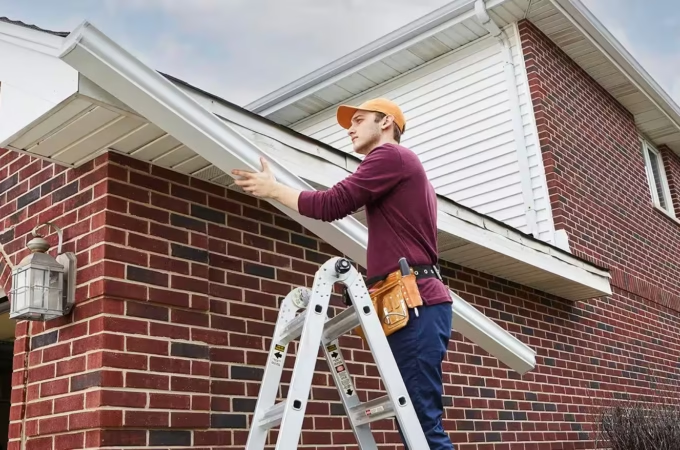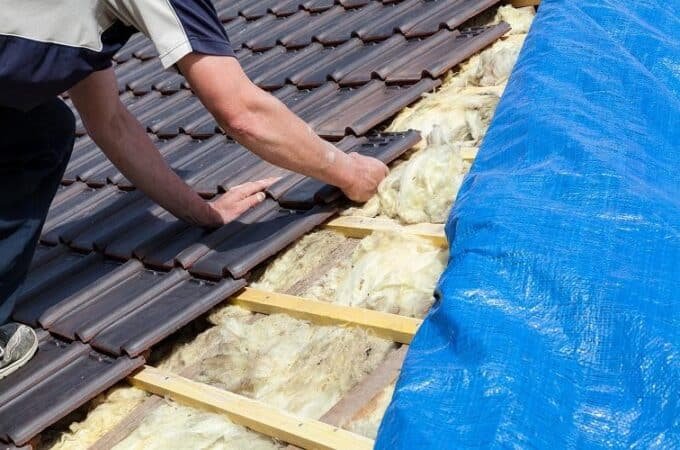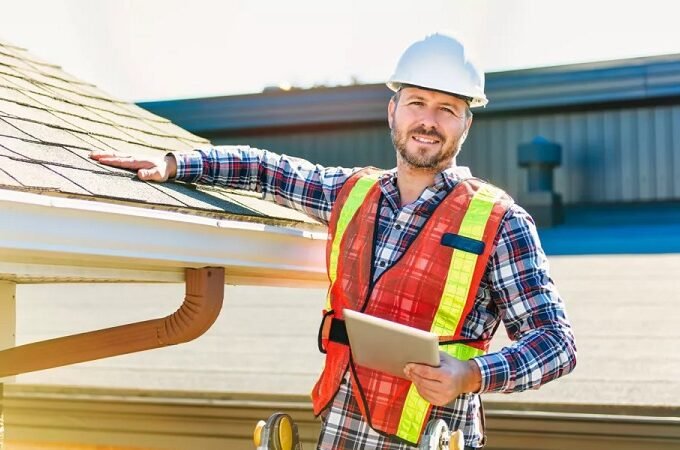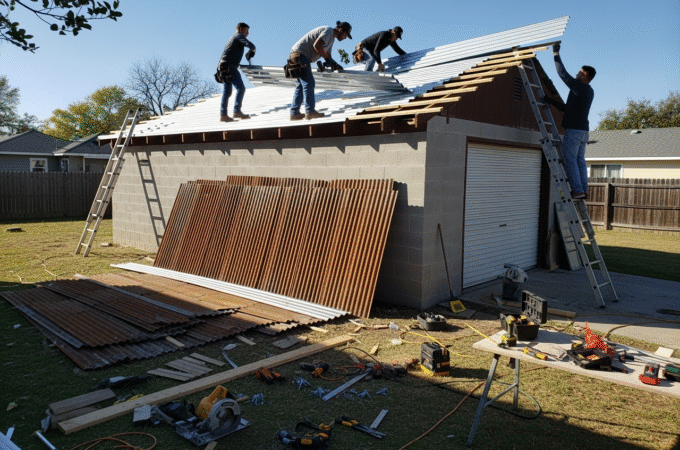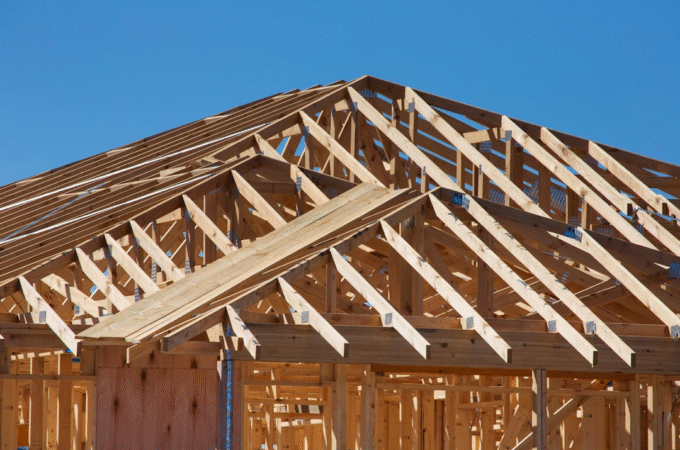
Roofing, Windows, And More: Building A Safer, Weather-Ready Home
Table of Contents
ToggleKey Takeaways
- Long-term protection from weather and time requires a holistic approach, incorporating roofing, windows, gutters, chimney caps, and siding.
- Hiring trustworthy professionals and using premium materials is the foundation for better performance, longevity, and reduced maintenance costs.
- Routine inspections and seasonal maintenance are essential for maximum value, comfort, and resilience.
Why a Whole-Home Approach Matters
When evaluating how to best defend your home from shifting weather, many overlook the interconnected nature of exterior features. It’s not just the roof that keeps your living space safe—seamless cooperation between roofing, windows, gutters, chimney caps, and siding defends against rain, wind, and temperature extremes. Imagine even the tiniest breach, such as a cracked window seal or a missing gutter section; these minor flaws can snowball into mold, water damage, and even foundation issues. By investing in quality roofing services and maintaining all exterior components, homeowners gain a multi-layered shield for their families and valuables.
According to a Forbes report on integrated exteriors, homes with coordinated, well-maintained exterior systems regularly outperform others in terms of longevity, comfort, and resale value. Well-protected homes are less likely to experience significant damage during storms and retain greater energy efficiency year after year. This comprehensive defense is the key to reducing long-term repair costs, saving on utilities, and enjoying peace of mind, regardless of the forecast.
Finding a Reliable Roofer for Quality Roofing
The journey toward a safe, long-lasting home almost always starts at the top—with your roof. However, the difference between a good and a great roof often comes down to the skill of the person installing it. Choosing the right roofer means finding someone who can align your home’s design with the most suitable materials while considering local climate conditions. A skilled professional installs each shingle or seam precisely, ensuring optimal performance and longevity. Homeowners should begin by gathering referrals from trusted sources, reviewing recent work, and verifying that the contractor holds proper licensing and insurance. Trustworthy roofers also offer clear, written contracts and stand behind their work with detailed warranties on labor and materials, delivering transparency and confidence throughout the process.
When you work with skilled professionals, you establish a foundation for decades of protection. Quality installation prevents leaks and insulation problems and protects warranty coverage by meeting manufacturer standards. If you cut corners or choose a contractor based on price alone, you may be left with repairs, water damage, or structural problems that cost far more than you saved upfront. In a field full of options, partnering with technicians known for high standards ensures you get optimal performance out of every product installed in your home.
When and Why to Upgrade Your Windows
Most people realize that drafty or foggy windows diminish a home’s comfort. However, upgrading your windows offers much more beyond temperature control. Inefficient windows can force your heating or cooling system to work overtime, showing up as spiking energy bills each season. The U.S. Department of Energy estimates that energy-efficient windows could help a household cut energy consumption by up to 30%, providing significant annual savings.
Modern window technology offers far more than just a better view—it enhances your home’s comfort, efficiency, and aesthetics. Advanced features such as double- or triple-pane glass, argon gas insulation, and low-emissivity (Low-E) coatings help regulate indoor temperatures, reducing strain on heating and cooling systems. These upgrades block harmful UV rays that can fade carpets, furniture, and artwork while significantly reducing outside noise. Many models now come with enhanced locking mechanisms for improved security. In terms of design, today’s energy-efficient windows are available in various styles, frames, and finishes to suit contemporary and classic architecture. Replacing outdated windows is an investment that delivers immediate daily comfort, reduced utility bills, and long-term resale value, making it one of the most rewarding home improvements available.
Gutters, Siding, and Chimney Caps: Overlooked Protectors
While the importance of a sturdy roof and sealed windows is easy to appreciate, gutters, siding, and chimney caps are often underestimated. Gutters and downspouts are critical for diverting water safely from your property; if they become blocked or damaged, water collects at the base of your home and may seep into the foundation, causing cracks, leaks, and even basement flooding. Siding, meanwhile, acts as a durable skin against wind, rain, and pests. If gaps or holes form in the siding, water and humidity can creep inside, leading to wood rot and potential structural compromise.
Chimney caps are another unsung hero. They prevent rainwater from flowing down the chimney, damaging brickwork, rusting dampers, and even causing mold to grow within interior walls. Chimney caps also block animals, such as birds and squirrels, from entering and building nests, keeping your chimney safe and functional year-round. Quick inspections each season and timely cleaning and repairs protect these vital systems and spare you from emergency calls when storms strike.
Maintaining Your Home’s Exterior: Seasonal Tips
The secret to a weather-ready home is an ongoing commitment to exterior maintenance. Tasks can be spread across each season to make them more manageable and ensure ongoing vigilance. Take advantage of mild weather in spring to inspect the roof, clean winter debris from gutters, and check for shingle damage or bent flashing. Summer is the time to cut back overhanging branches, wash siding, and repaint areas where the finish has deteriorated. When autumn arrives, scoop leaves and twigs from gutters and install guards if needed. Tighten caulking around windows, access hatches, and utility penetrations to keep drafts and water out.
Winter can be especially punishing, so monitor for icicles or ice dams forming on the roof’s edge. Clear heavy snow from vulnerable roofs, and check your attic for signs of leaks or condensation. Documenting your maintenance—jotting down dates of repairs or cleanings—can also help you track recurring trouble spots. With regular, preventive care, minor issues are spotted and corrected before they can cause extensive (and expensive) damage.
Modern Materials and Trends in Home Exteriors
Today’s home improvement landscape is filled with exterior material options that combine resilience, style, and innovation. Whether you’re upgrading for protection or aesthetics, manufacturers now offer advanced solutions engineered for performance in all kinds of weather. Impact-resistant shingles, durable metal panels, and modern composite or engineered slate boards are built to endure hail, high winds, and prolonged UV exposure—all while maintaining a refined, elegant appearance. Likewise, siding alternatives like fiber cement, insulated vinyl, and engineered wood have replaced mainly traditional wood and aluminum due to their moisture resistance, longevity, and low maintenance demands.
As a recent Architectural Digest trend review highlights, homeowners are increasingly drawn to sustainable materials and bolder color palettes that reflect personality and architectural integrity. There’s growing emphasis on features that improve energy efficiency, resist climate stressors, and maintain long-term curb appeal. Technological advancements such as self-cleaning coatings, algae-resistant treatments, and thermal-reflective surfaces further extend performance. By selecting these forward-thinking materials, homeowners improve their property’s appearance and resilience and increase its long-term value, making it a smart and stylish investment for the future.
Energy Efficiency and Climate Resilience
Energy efficiency begins by strengthening the home’s building envelope—the protective outer shell that separates indoor comfort from outdoor extremes. Upgrading to insulated siding and cool roof technologies helps maintain stable indoor temperatures by reflecting sunlight and reducing unwanted heat absorption. These materials are especially effective during sweltering summers and freezing winters, easing the burden on HVAC systems. High-performance windows featuring low-emissivity (low-E) coatings and inert gas fills further reduce heat transfer, limit solar gain, and increase indoor comfort without sacrificing natural light. To complement these features, weather-tight chimney caps help minimize heat loss while preventing water intrusion during storms.
For optimal results, prioritize ENERGY STAR-certified windows, siding, and roofing materials that meet rigorous energy performance standards. Installing gutter guards helps maintain proper drainage, protect foundations, and prevent moisture-related damage. Replacing outdated attic insulation further enhances your home’s year-round thermal regulation. These upgrades slash utility bills and add lasting value to your property. As weather patterns grow more unpredictable, investing in a resilient, energy-efficient home ensures long-term comfort, sustainability, and peace of mind.
Why Professional Inspections Matter
Even the most diligent homeowners can overlook minor but critical issues that may lead to costly damage if left unaddressed. While basic maintenance, such as clearing gutters or scanning for visible leaks, helps, it often fails to reveal underlying vulnerabilities. Subtle signs—like a handful of missing shingles, minor gutter misalignment, barely visible nail hole exposure, or faint discoloration in the woodwork—may not trigger concern, but they can signal deeper trouble. Certified roofing professionals are trained to spot these early red flags and assess the complete condition of a home’s exterior.
To safeguard your investment, schedule a comprehensive inspection at least once a year and always after extreme weather. A professional will examine flashing, sealant integrity around skylights and vents, attic airflow, and water infiltration or fastening failure signs. These detailed evaluations don’t just catch problems early—they extend the lifespan of your roofing system, preserve manufacturer warranties, and help you plan proactive repairs. With consistent, expert oversight, your home stays resilient against the elements, ensuring peace of mind through every season and storm.

